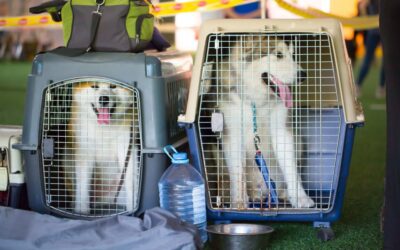To hunt grouse without a dog, learn their habitats and practice stealthy walking to flush the birds. Scout for signs like droppings, feathers, and dust baths for the best hunting spots.
Grouse hunting can be both a challenging and rewarding experience, particularly when undertaking the task without the aid of a dog. These birds, known for their elusive nature, reside in dense woodland habitats, which requires hunters to sharpen their woodsmanship skills.
Mastery in identifying grouse sign, such as fresh droppings or feeding areas, becomes crucial to tracking these game birds successfully. Silent movement and keen observation are integral, as grouse can startle easily and take flight at the slightest disturbance. Your approach should be calculated, leveraging patience and meticulous scanning of the underbrush for the rustling that indicates the presence of grouse. Time spent learning the terrain and understanding grouse behavior can significantly increase your chances of a successful hunt.
Solo Grouse Hunting Essentials
Gearing up for solo grouse hunting demands attention to detail. A successful hunter packs lightweight, reliable equipment. Essential gear includes a dependable shotgun or a .22 caliber rifle. Choosing firearms depends on personal comfort and hunting environment. A shotgun with #6 or #7.5 shot is ideal for forested areas.
Camouflage clothing helps you blend with the surroundings, making it harder for grouse to spot you. Weather-appropriate attire is crucial; layers work best. Pack a first-aid kit, navigation tools, and enough food and water. Never forget a sharp knife, a compass, and a map. Good boots protect your feet on rough terrain. An orange vest is vital for safety. Lastly, store your license in an easily accessible pocket.
Grouse Habitat And Behavior
Identifying Key Habitats for grouse is crucial for a successful hunt. These birds prefer areas with ample cover such as thick bushes. Look for spaces where natural food sources like berries and seeds abound.
Grouse are often found in young forests and edge habitats where different landscapes meet. Dense vegetation offers them protection while allowing forage opportunities. Spotting these environments significantly increases your chances of locating grouse.
Understanding Seasonal Movements influences where you’ll find grouse. In spring and summer, they tend to stay in lower elevations with lush growth. As winter approaches, grouse move to higher ground, searching for evergreen coverage and warmth. Being aware of these patterns is fundamental to tracking their whereabouts during hunting season.
Effective Scouting Techniques
Effective scouting is crucial for a successful grouse hunt without a canine companion. Topographical maps provide valuable insight into the terrain. These maps help identify potential grouse habitats like dense forests and bushy areas. Look for water sources, as grouse often frequent these spots. Elevated land like ridges can give a strategic view.
Before the season starts, study these maps to plan your scouting trips. Search for locations with a mix of young and mature forests. These are where grouse like to hide and feed. Learning to read these maps can significantly increase your chances of finding grouse. Use them to mark promising spots for physical scouting.
Walking Strategies For Flushes
Successful grouse hunting often hinges on effective walking strategies. To create opportunities for flushes, being mindful of your pace is crucial. Maintain a steady, deliberate pace that mimics natural movements within the environment. Fluctuate your rhythm occasionally, as erratic patterns can spur grouse into the open.
Reading the terrain is just as vital. Look for areas with ample cover, such as dense brush or the edges of woods, where grouse likely feed or rest. Soft ground mutes noise, making sneaking up easier. Advance through these areas with heightened awareness, ready to spot the quick burst of a grouse taking flight. By mastering these techniques, even hunters without dogs can enjoy success.
Shooting Skills And Techniques
Mastering quick target acquisition is vital for grouse hunting success. Start by focusing on a small object and quickly raising your firearm to aim. This drill improves your reaction time and hand-eye coordination.
To enhance accuracy, create a routine of mental and physical preparation before each shot. A strong stance and steady breathing are key. Implement dry firing practices at home to perfect your technique without live ammunition. Commit to regular marksmanship drills to make these skills second nature. Consistency in your shooting stance and routine leads to better accuracy while hunting.
After The Shot: Retrieval And Preservation
Finding a downed grouse can be tough without a dog’s help. Begin your search around the area where you last saw the bird fall. Form a mental image of the location. Walk in an outward spiral from the shot point to cover more ground. Look for feathers or disturbed vegetation. Grouse often land beneath low-hanging branches or brush, so check these hideouts carefully. Persistence is key.
Field dressing starts by cooling down the bird. Open the body cavity to remove entrails, which ensures rapid cooling. Use clean, cold water to rinse the inside. Pat the bird dry. Transport it in a cooler with ice or cold packs. This preserves the meat quality. When hunting in warm weather, quickness is essential to prevent spoilage.
Frequently Asked Questions Of How To Hunt Grouse Without A Dog
What Is The Best Time For Hunting Grouse?
The ideal time to hunt grouse is during early morning or late afternoon. These periods align with their most active feeding times, which increases visibility for hunters. Aim for autumn months when they’re more exposed due to less foliage.
How Do You Locate Grouse In The Wild?
To locate grouse, focus on finding their habitats, like edge environments where forests meet open areas. Look for signs like droppings and feathers. Listen for their distinct calls and rustling underbrush, indicating their presence and movement.
What Gear Is Essential For Grouse Hunting?
Essential gear includes a reliable shotgun, preferably with #7 1/2 shot or similar. Also, bring camouflage clothing for stealth, durable boots, a hunting vest with game pockets, and protective eyewear. A GPS device or map can help navigate the terrain.
Can You Use Calls To Attract Grouse?
Yes, using calls can be effective. Grouse calls mimic the sounds of their social interactions, which can lure them out. However, calling requires skill; subtle and sparing use increases the chance of attracting grouse without alarming them.
Conclusion
Embarking on a grouse hunting adventure without the aid of a dog is entirely feasible. By employing savvy strategies, patience, and honing your skills, you ensure a successful outing. Harness local knowledge, perfect your call, and gear up for stealth—these are your keys to triumph in the wild.
Embrace the challenge and the serenity of nature while pursuing the elusive grouse solo.


